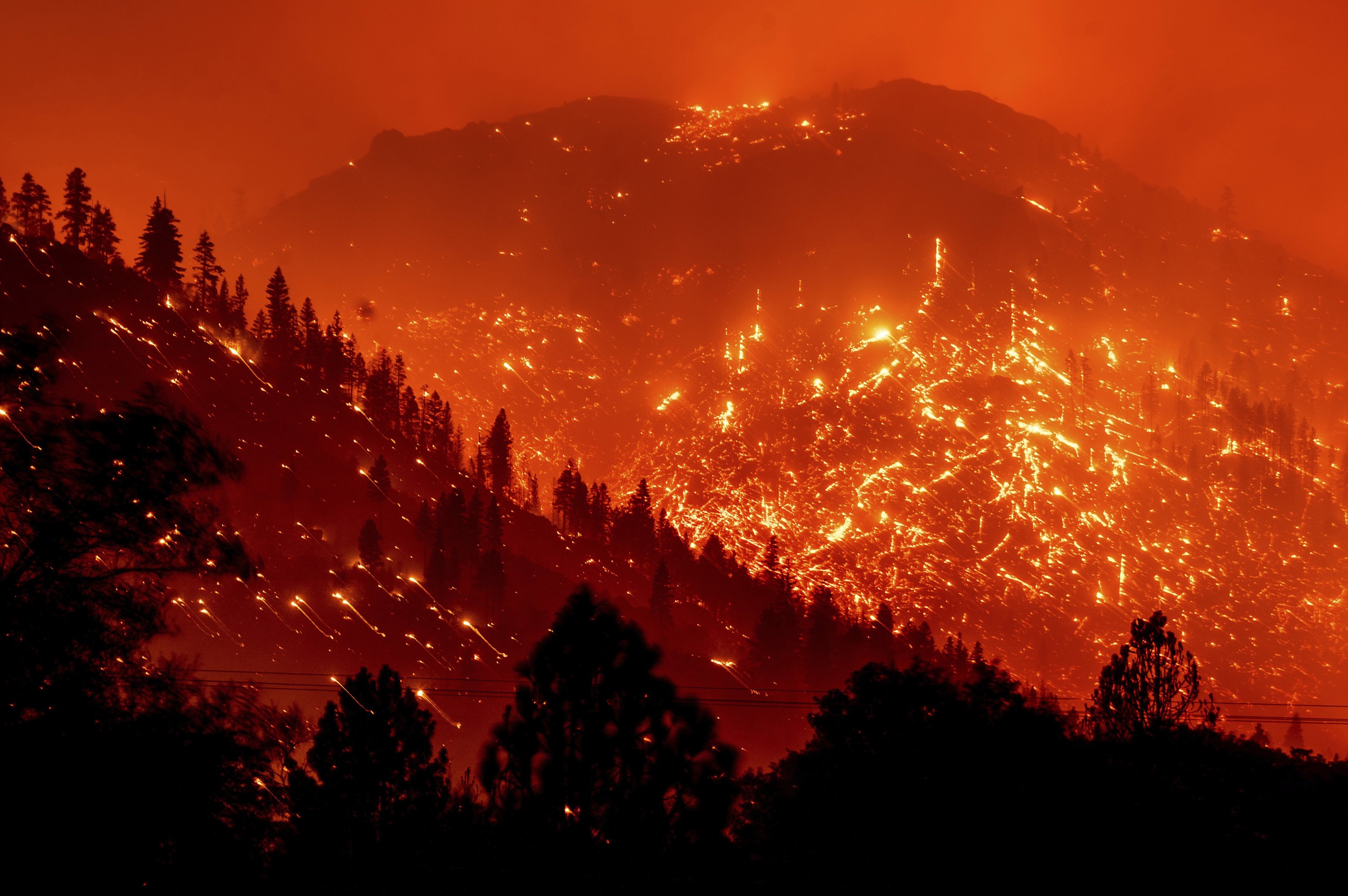PULGA, Calif. — A blaze that erupted near the flashpoint of the deadliest wildfire in recent U.S. history was heading away from homes on Thursday. Still, survivors of the 2018 blaze in Paradise worried that history could repeat itself.
The Dixie Fire had burned 3.5 square miles (9 square kilometers) of brush and timber near the Feather River Canyon area of Butte County. It moved into national forest land in neighboring Plumas County.
However, there was zero containment, and officials warned residents of the tiny communities of Pulga and East Concow to be ready to leave.
In its early hours, the fire raced along steep and hard-to-reach terrain about 10 miles (16 kilometers) from Paradise, the foothill town virtually incinerated by the Camp Fire that killed 85 people.
Larry Peterson, whose home in neighboring Magalia survived the last blaze, said some of his neighbors were getting their belongings together if they had to flee. “Anytime you’ve got a fire after what we went through, and another one is coming up, you’ve got to be concerned,” he told KHSL-TV.
Other locals stocked up on water and other items. “We pretty much left with our clothes on our backs,” said Jennifer Younie of Paradise during the previous fire. “So this time, we want to be more prepared and vigilant.”

Joyce Mclean’s home burned last time, but she has rebuilt it and will again if necessary, she told the station. “We just take each day as it comes, and if it happens, it happens,” Mclean said. “There’s not much that we can do about it.” Ironically, the blackened scar of the previous blaze stood between the fire and the homes.
“Everything’s pretty much burned between them and the fire,” Butte County Supervisor Bill Connelly told the Sacramento Bee. “Some bushes and grass have grown back, but it’s probably not a direct threat now.”
The blaze is one of nearly 70 active wildfires that have destroyed homes and burned through about 1,562 square miles (4,047 square kilometers) — a combined area larger than Rhode Island — in a dozen mostly Western states, according to the National Interagency Fire Center.
In southern Oregon, the Bootleg Fire, the largest wildfire currently burning in the U.S., had torched an area larger than New York City and destroyed 20 houses. It threatened 2,000 structures just north of California gripped by a historic drought.
Tim and Dee McCarley could see trees exploding into flames in their rearview mirror as they fled the fire last week at the last minute. They had put off their departure to pack more belongings and search for their missing cat.
“The sheriff’s department had been there, and they said, ‘If you don’t get out of here now, then you are going to die,'” said Tim McCarley, 67, as he, his wife, and stepson rested Wednesday at a shelter at the Klamath County Fairgrounds.
“We were running around like a chicken with its head cut off, throwing stuff into the car. Then we say, ‘Okay, that’s it … we got to go.” Tim McCarley was allowed to return briefly after the fire had passed over their rural community northwest of Bly. He found his home still standing and their cat inside unharmed. But the flames had crept within 5 feet (1.5 meters) of their house, the heat melting their trailer and storage units until they looked “like a melted beer can,” he told The Associated Press in a phone interview.
The National Weather Service tweeted late Wednesday that a “terrifying” satellite image showed gigantic clouds fueled by smoke and hot air had formed over the fire — a sign that the blaze was so intense it was creating its weather, with erratic winds and the potential for fire-generated lightning.
“Please send positive thoughts and well wishes to the firefighters. … It’s a tough time for them right now,” the tweet read. Climate change has made the American West much warmer and drier in the past 30 years and will continue to make weather more extreme and wildfires more frequent and destructive. Arid conditions and heatwaves tied to climate change have swept the region, making wildfires harder to fight.
Last month, an extreme heatwave sucked vegetation dry in the Pacific Northwest, where firefighters say they face conditions more typical of late summer or fall than early July. The Northwest Interagency Coordination Center moved the region up to the highest alert level Wednesday as dry gusts were expected in some areas and new fires popped up.
In California, the state’s largest fire this year grew modestly to 156 square miles (404 square kilometers) north of Lake Tahoe near the Nevada state line. The Beckwourth Complex, a merging of two lightning-caused blazes, was 68% contained as the weather improved.
In Washington, firefighters braced for the arrival of strong winds that could fan the flames of existing wildfires. The National Weather Service issued a red flag warning for much of eastern Washington that should end by Thursday evening.
Authorities said that a fire in Chelan County in central Washington threatened 1,500 homes along with orchards and a power station. The sheriff’s office said detectives and county and federal fire investigators served a search warrant at a house believed to be where the fire started, but the news release didn’t provide any other details. Mandatory evacuations were in effect.
In north-central Washington, about 200 people in Nespelem on Colville tribal land evacuated Monday night as the largest of five wildfires caused by dozens of lightning strikes tore through grass, sagebrush, and timber.
That fire was 20% surrounded as of Wednesday. Seven homes burned, but four were vacant. Associated Press writers Sara Cline and Gillian Flaccus in Portland, Oregon, contributed to this report.
